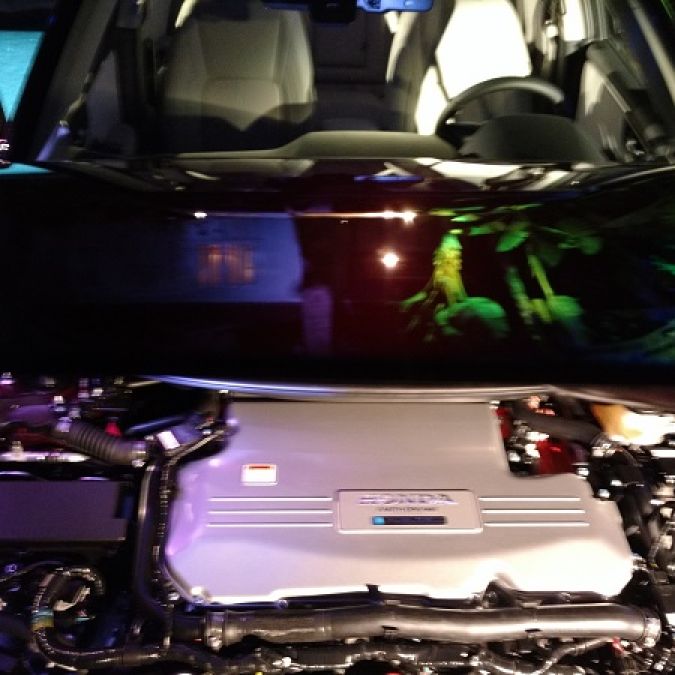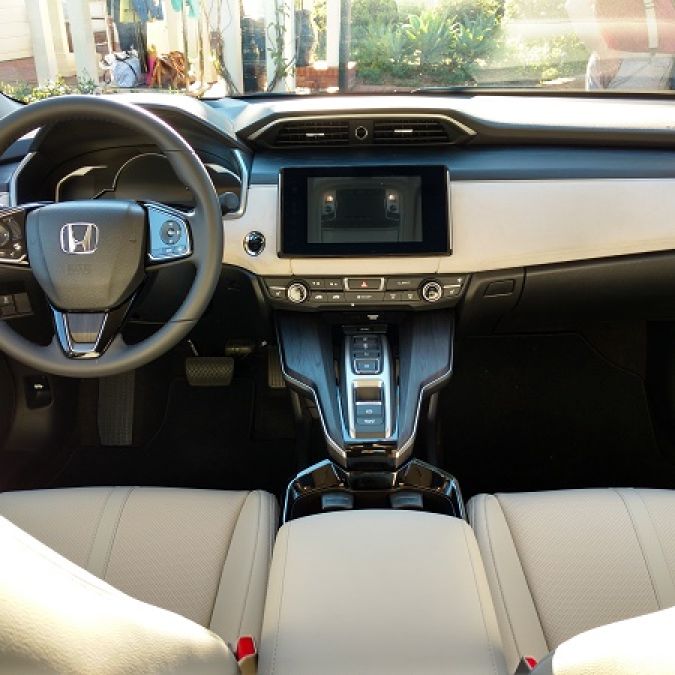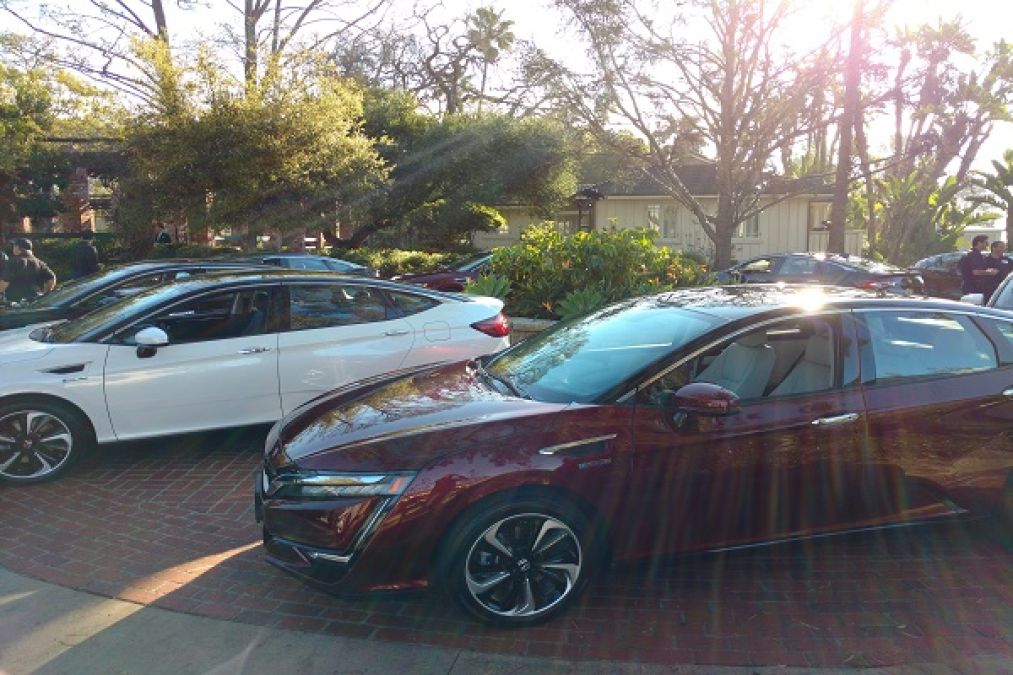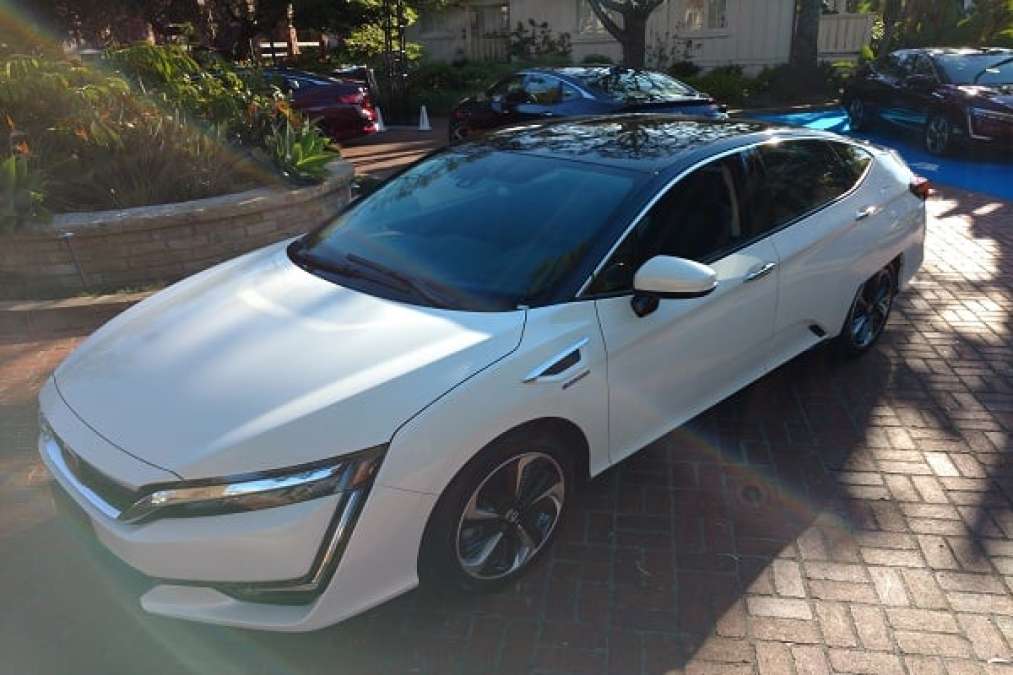As I braced myself for a compromised drive and ride experience, the zero emissions hydrogen fueled 2017 Honda Clarity surprised at every turn. It’s arguably the finest automobile to ever come out of Japan.
I, like many of my auto writing comrades, remain a bit skeptical as to the market viability of hydrogen fuel cell cars. In development for several decades, fuel cells have been employed to generate electricity for industrial equipment, buildings, city buses and yes, cars. Honda sits at the forefront of mainstream fuel cell car development and marketing with Clarity, now in its 3rd generation traveling the roads of Japan and Southern California.
To date, the downside of fuel cell vehicles is a glaring lack of hydrogen fueling infrastructure, as well as the per-unit cost of development and marketing of hydrogen fueled cars. Honda’s dedicated to not only expanding the fueling network, but measurably increasing Clarity lease availability in select markets. According to Honda, by the end of March, 100 3rd generation Clarity FCVs will be delivered to customers, on the path to placing thousands of Clarity FCV (fuel cell electric vehicles) on the road in the near term. With Clarity, you’ll have 3 electric variants to choose from.
Honda tells us that the Clarity plug-in hybrid will be the best seller of the 3. Yet, Clarity hydrogen fuel cell comes to market first with a drive and ride experience unique to fuel cell electric, and arguably the most future forward body design, interior craftsmanship, advanced electronics, connectivity, and active accident avoidance safety features available in Honda’s reinvented car and light truck lineup.
The drive
Once Honda Clarity FCV is fueled with compressed hydrogen,(26 fueling locations in California) a process that’s completed in 5 minutes or so, Clarity falls in line with the best performing electric cars on the market today. On the performance side of Clarity, the hydrogen fuel stack electric generator produces a combined motor horsepower of 174 @ 13,000 rpm. Maximum torque is stated at 221 lb-ft, with an electronically limited top speed of 103 mph. We noted no lack of instant-on torque with Clarity. Discover more about 2017 Clarity FCV specification and availability here.
Within minutes of dropping behind the wheel of Clarity’s” advanced modern lounge”, one forgets that Clarity is an electric vehicle. Outside of the instant-on throttle response, the transition from start to cruising speed is seamless -- Honda’s reduced the electric motor whirl in Clarity to a whisper -- braking, although regenerative, has a very natural hydraulic pedal feel to it -- the road feedback through the steering wheel is responsive, yet not overly so --the suspension reduces road imperfection to nil, with interior noise levels generally associated with a university library.
One finds a near intuitive driver to car connectivity as to ease of access and vehicle command. Drive selection, electronic parking brake and drive-mode, is accessed through an eye pleasing consul, well positioned electronic dash gauge array, i-MID and exceptional no-smudge static monitor center stack. Our Clarity is finished in executive office-like wood grained plastics, brushed metals, tight piled carpeting, and man-made leather seating surfaces. Clarity seating is seriously comfortable, power adjusted(front) and heated. In clarity, a multi-controlled climate control system is micron filtered -- fantastic freedom from airborne particulates.
Twisting through the country back roads of Santa Barbara, due to Clarity’s rather low center of gravity, reactive dampening, and independent front and rear suspension, Clarity took on the personality of a sport-sedan. Range anxiety generally associated with electric cars is gone, thanks to Clarity’s 360 + mile between fill up drive range, so we didn’t baby Clarity. Road handling, acceleration, and downhill deceleration is exceptional. 
Truthfully, If I lived within the current hydrogen refueling network, I’d lease a 2017 Clarity FCV tomorrow morning. Clarity’s appeal goes way beyond zero exhaust emissions. Simply put, it’s a glimpse into the future of personal transportation, class-topping comfortable, and dare I say, fun to drive!






Comments
I would like to see a viable
Permalink
I would like to see a viable fueling network here in Oregon and across the nation.
Have you driven a Tesla? Way
Permalink
Have you driven a Tesla? Way better performance, no range anxiety plus no more trips to the gas station!
The problem with hydrogen fuel cells is there's no way to refuel at home. You will be forever stuck paying at the pump, how is this any better then a gasoline car? So if hydrogen prices go up there's nothing you can do about it. At least with an all electric car you have some control since you can fuel it at home (solar panels come to mind).
Welcome Bob. Apples to
Permalink
In reply to Have you driven a Tesla? Way by Bob (not verified)
Welcome Bob. Apples to Oranges. Both offerings have limitations. Hydrogen is simply a step in the right direction for Honda, Toyota and others. As of this writing fuel cells are being installed in industrial equipment as well as commercial trucks and Buses. In an industrial application, the weight of an adequate charge-range battery module is problematic. And then there's the eventual replacement cost of the battery module. Yes, I'd love to charge my Tesla S at home via alternative electricity generating, hydro, wind or solar. $$$$
Not really apples to oranges,
Permalink
In reply to Welcome Bob. Apples to by Parks McCants
Not really apples to oranges, after all they are both considered EVs. You can get a used 2012/2013 Tesla model S 85 for $45k. Plus the model 3 in a couple years, both are cheaper than the Clarity FCEV, sexier, have better performance, can be fueled at home and have a lower operating cost! Sounds too me like Honda and Toyota are the ones moving in the wrong direction! Just imagine how much battery electrics will have evolved in terms of price, range and performance by the time a H2 infrastructure gets built out across the entire U.S.!
Good morning Bob. I'm sure
Permalink
In reply to Not really apples to oranges, by Bob (not verified)
Good morning Bob. I'm sure that you're aware that Clarity will come to market in 3 variants. look for the New York Auto Show review next week. It's all a step in the right direction as to lowering environmental impact.
Yes I'm aware of the three
Permalink
In reply to Good morning Bob. I'm sure by Parks McCants
Yes I'm aware of the three variants. The problem is Honda isn't serious at all about the battery electric version. They are only giving it 80 miles of range! Basically just a compliance car, looks like all their focus went into the FCEV version! Like I said Honda and Toyota are moving in the wrong direction as neither one are putting any effort into bringing a compelling battery electric car to market! As far as environmental impact is concerned most H2 comes from methane reformation since it's the only economical way to get H2. So FCEVs are basically fossil fuel cars, nothing more than big oils attempt to keep everybody coming back to the pump!
We'll keep the conversation
Permalink
In reply to Yes I'm aware of the three by Bob (not verified)
We'll keep the conversation moving forward. How much impact do you believe the manufacturing of batteries have on the planet? Let's begin with the mining process of lithium, and other rare earth metals, the molding of plastics, etc. And then the disposal of the battery module at the end of its life cycle. There is no free lunch in human transportation, including walking -- dependent on one's dietary intake. I lived off the P.U.C. grid for 3 decades. You're preaching to the choir. In L.A. County and other metro regions, methane gas is recovered from land fill. No less than 30% of the gas used in nitrogen conversion is green sourced in California. And while the process does require huge amounts of grid energy, that too can be generated from hydro, wind and solar. For Honda. G.M., Toyota, Daimler and others, hydrogen is but one component in the inevitable electrification of the automobile. Consumers want choices, manufacturer's answer the call, though be it painfully slow.
EV batteries either get
Permalink
In reply to We'll keep the conversation by Parks McCants
EV batteries either get repurposed or recycled at the end of their life. Every car no matter gas or electric has environmental impacts with the manufacturing process. It's not economically viable to use renewable energy to create large amounts of H2. The cost is way too high it's way cheaper to get it from methane. Doesn't matter if one or two states do it for ~30% because that's no where near enough if FCEVs became mainstream. In other words it's not scalable on an economical level. Besides what about the rest of the States? Is the whole country going to get H2 from renewable sources? Then there's the H2 infrastructure problem and the tremendous cost involved with all that! I think H2 is good for industrial application but not passenger cars. It would be cheaper, easier and faster to use that money to continue building out a DC fast charge network. Fast charging is already about to get a lot better with 150kw chargers coming out. Battery electric tech is already vastly superior in terms of efficiency over HFCEVs, the IONIQ gets 124mpge vs only ~68mpge for FCEVs. Why waste money and resources on an inferior technology?!?